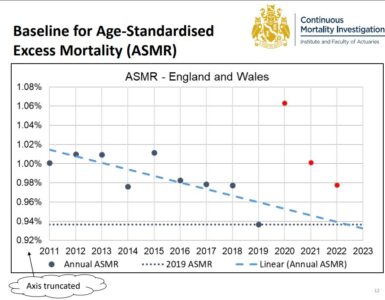Anaesthesia | Tim Cook and John Roberts
In December we published a bulletin validating the UK government’s vaccine priority order, and suggesting that 99% of deaths will be spared by vaccinating the first nine priority groups. We followed that up in January with a bulletin that set out when we might start to see the effects of the first four priority groups on cases, hospital admissions and deaths, given the target to vaccinate these groups by 15th February – a target that looks well on track.
A paper published today in Anaesthesia by Professor Tim Cook, a Consultant in Anaesthesia and Intensive Care Medicine in Bath, and John Roberts of this group, develops this theme further and projects the beneficial impact on hospitals and deaths as the vaccination of Priority Groups one to nine continues.
Independent of any changes in overall prevalence of the virus, which recently has been strongly downwards, completion of all priority groups is expected to reduce hospital admissions by nearly 90%, and ICU admissions by around 80%. However, the distribution of ICU admissions towards younger individuals means that the benefit will lag general hospital admissions by around a month. This delay needs to be reflected in any decisions regarding gradual removal of restrictions, given the intense pressure ICUs are still under.
The paper also touches on the vaccine strategy as the roll-out continues, with discussion about where key worker groups should fit into the programme. It considers whether it is both moral and rational to look wider than the UK when deploying our vaccines, given the global imperative to vaccinate beyond those countries with better access to vaccines.
In the last few days we appear to be starting to see the first signs of deaths falling relatively more quickly in the oldest age groups, consistent with our analysis. Together with a vaccination programme that continues to deliver ahead of the original target rate, there is now much reason for optimism. This must be tempered by knowledge that hospitals will remain under considerable pressure for the next couple of months, particularly if downward pressure on the prevalence of the virus is reversed through a too hasty relaxation of non-pharmaceutical interventions, or if a variant against which existing vaccines are less effective becomes more prevalent.
https://associationofanaesthetists-publications.onlinelibrary.wiley.com/doi/full/10.1111/anae.15442

(c) 2021 Association of Anaesthetists














